However, scaling remains one of the most hidden and misunderstood aspects of social research measurement. It aims to perform one of the most complicated research tasks, that is, measuring abstract concepts. Scaling refers to a procedure in which numbers or other symbols are assigned to a property of objects.
Numeric rating scale or NRS
- Conversely, the project scope encompasses all the work needed to deliver a product or service.
- Scale effect refers to the idea that different scales or resolutions may result in varying observations and, consequently, different conclusions about the phenomenon under investigation.
- For instance, comparing population density by counties in one region versus by state in another, without awareness of the impact of differing scales, can lead to erroneous interpretations.
- This scale focuses on individuals or small groups, providing detailed insights into personal behaviors, attitudes, and experiences.
- The next step in applying Rasch theory is for our researcher to predict the location of marks (item difficulty) along the meter stick for specific test items.
- In that case, it will adversely affect the overall study or research by providing unreliable results, undermining the research objective and wasting time, energy, and resources.
- Different algorithms also require that the data to be normalized for it to work well.
Twenty items were appropriate for ninth-grade students, but five test items were at college level. In GIS, map scale refers to the ratio between map distance and real-world distance. It determines Software engineering how much area is covered and how much detail is visible. Before you can start collecting and analyzing information for your needs assessment, take some time to consider your desired outcomes. Set objectives and gather data on areas of opportunity to plan deadlines and understand the intended outcome.
Types of Strategies in Strategic Management
This evaluation includes the ability to track required assets during any stage of production in the course of the entire project. A deliverable can include any objective or milestone within a project such as the creation of products, services, or processes. Additionally, it can consist of incremental changes, staged across the project plan used to govern or assess the pace of the project’s progress. A Likert scale is a useful tool for effective market research to receive feedback on a wide range of psychometric attributes. The agree-disagree scale is particularly useful when your intention is to gather information on frequency, experience, quality, likelihood, etc. Also known as verbal pain scores and verbal descriptor scale compiles a number of statements describing pain intensity and duration.
- The Marina del Rey harbor is represented by a small inlet on the map.
- Your team’s availability and organizational resources will impact the comprehensiveness of your needs assessment.
- Sieve analysis is a method that is used to determine the grain size distribution of soils that are greater than 0.075 mm in diameter.
- Let us know more about the Likert scale with the help of the following example (statement and options).
- Scientific study is often divided into the macroscopic level (direct observation), the microscopic level (too small or fast for direct observation), and the cosmic level (too large or slow for direct observation).
- FA is a commonly applied and widely promoted procedure for developing and refining clinical assessment instruments to produce evidence for the construct validity of the measure.
Techniques of Scale Development
The meso-level examines organizations, communities, or networks, offering multi-scale analysis a balanced view between individual and societal scales. It’s commonly used in organizational studies and community-based research. Examples include ratio scales, such as length, weight, or time, which are often used in market research for measuring aspects like price and customer numbers.
Scale and resolution in GIS: understanding essential concepts for effective map design
In conclusion scaling, normalization and standardization are essential feature engineering techniques that ensure data is well-prepared for machine learning models. They help improve model performance, enhance convergence and reduce biases. However, it is used extensively in studies related to psychology and social sciences. In an attitude scale, different questions are framed and the response of the respondent is noted. In developing the question statements, care must be taken so that the questions elicit the responses that are psychologically related to attitude being measured. In addition, the question statements must be made in such a way that the slightest of individual differences are made visible.
- The meso-level examines organizations, communities, or networks, offering a balanced view between individual and societal scales.
- Choosing the right scale for analysis ensures that policies are designed to address the problem at the level where it’s most impactful, enhancing their effectiveness.
- Identifying needs requires team communication, problem solving skills, and out-of-the-box ideas.
- Different scales can lead to different interpretations of the same data set.

Commentaires récents